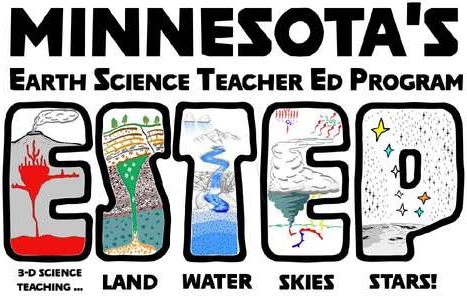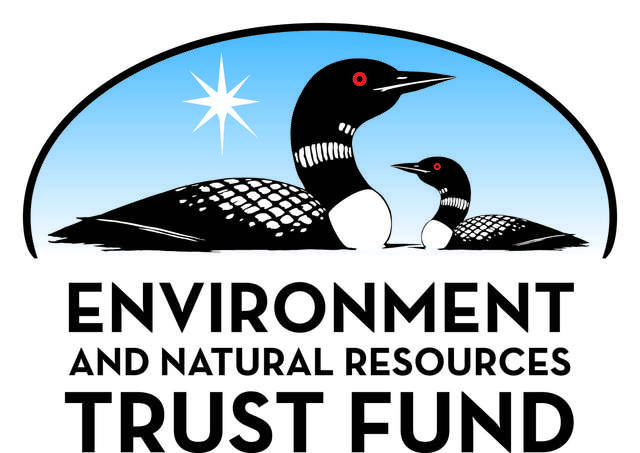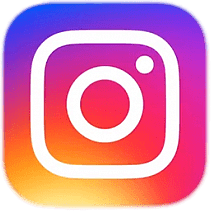Top > Professional Development > NGSS Lesson Adaptation with Mary Colson
Three-dimensional teaching and learning: you’ve been to a training, now what?
by Mary Colson, March 13, 2020
I’d like to offer three suggestions for how to start your journey to implement the 2019 Minnesota science standards. They are in no particular order and I have pursued each one at different points in my own journey [see above] depending on my own questions and classroom/student needs. Like a ship that needs to be moving in order to change direction, I think you need to be underway in order to start making the transition to 3-D teaching and learning.
1) Gather information: read up on the practices and possible strategies for instruction.
- Chapter 3 of A Framework for K-12 Science Education (Framework) has brief narratives about each of the 8 science and engineering practices. These narratives give great overviews of what the practices look like for scientists and engineers. They also offer a description of what a student, by the end 12th grade, should be able to do when engaged in each practice. These narratives can give you a deeper appreciation for the nuances of the practices. The Framework document may be downloaded for free from nap.edu.
- Appendix F of the Next Generation Science Standards fleshes out the learning progressions for each of the 8 practices. On each one-page table of Appendix F, you can see what a practice looks like when students of different ages are engaged with it. I keep a copy of this appendix on my desk and refer to it often to help guide the development of investigative experiences in my classroom. Appendix F can be downloaded for free from nextgenscience.org.
- Check out the NSTA Press book: Helping Students Make Sense of the World (Schwarz et al, 2017). This is a great resource with vivid classroom vignettes of students figuring stuff out. The heart of the book is 9 stand-alone chapters describing what each practice looks like in a classroom and offering solid ideas for how to support the practice in your classroom. The bookend chapters can also be read stand-alone. The front chapters give a big picture view of ‘why practices?’ and the end chapters address the question ‘how can we teach using the practices?’ This book is available at nsta.org/store.
2) Start doing practices with your students: modify a well-loved lab
- Who’s doing the practices? Early on in my journey, I realized that when I fixed my labs so they would work, I stripped out the messiness of science. For example, I was recognizing a poorly designed experiment when the data didn’t make sense – but my students weren’t. They just followed the recipe. I was doing the practices of science, not my students! Look at Planning and Carrying Out Investigations (PCOI) in Appendix F and read the bullet points. Are your students doing these aspects of the practice or are you?
- Start by diving into an investigation with your students. My gateway into 3-dimensional learning was to permit myself to use class time differently and to give some of the messiness of a scientific investigation to my students. My job became managing and directing the investigation. What made this successful was that I used an investigation I was already familiar with and had the materials for. I didn’t need to buy anything, I just designed the activities so students were doing what I had done to ‘fix’ the lab.
- You are not alone. Minnesota teachers are just beginning a journey that started in 2013 with the rollout of Next Generation Science Standards. There are now many resources available for answering those ‘How do I ___?’ questions. In particular, many NSTA journal articles focus on helping teachers shift their instruction to 3-dimensional learning. At nsta.org, one can search journal articles by grade and by topic and find approaches and strategies for 3-dimensional learning and teaching. STEMteachingtools.org publishes briefs on the practices and other facets of 3-dimensional teaching and learning. For those of you who prefer discussion partners, you might find Twitter’s #NGSS, #NGSSchat and #NGSStweeps helpful.
3) Explore how to develop a culture of discourse in your classroom
“ . . . teacher and student talk is the vehicle by which every student can make his or her way into a deep and productive relationship with the science and engineering practices.”
From Recitation to Reasoning by Michaels and O’Connor
in Helping Students Make Sense of the World, 2017
- Getting students engaged in productive academic talk is difficult and complex but incredibly rewarding. It’s worth trying out strategies early in your journey. You will need to promise yourself to persevere because small and large group discussions often don’t go as planned, especially at first. In my experience, my students also have a learning curve and need the first semester to learn to talk productively. By second semester, they transition quickly into talk routines that are both productive and fun.
- I recommend two resources, listed below, that can help you see what’s possible in making your classroom a place where all students’ voices and ideas are heard and valued.
o The Talk Science Primer - https://inquiryproject.terc.edu/shared/pd/TalkScience_Primer.pdf
o Eliciting Students’ Ideas and Adapting Instruction – one of the tools for Ambitious Science Teaching found at http://ambitiousscienceteaching.org/wp-content/uploads/2014/08/Primer-Eliciting-Students-Ideas.pdf
I’d love to hear about your experiences as you begin your transition to 3-dimensional teaching and learning. I’m on twitter @MnMColson. Here’s hoping for smooth sailing.









 Minnesota science teachers should know about:
Minnesota science teachers should know about: